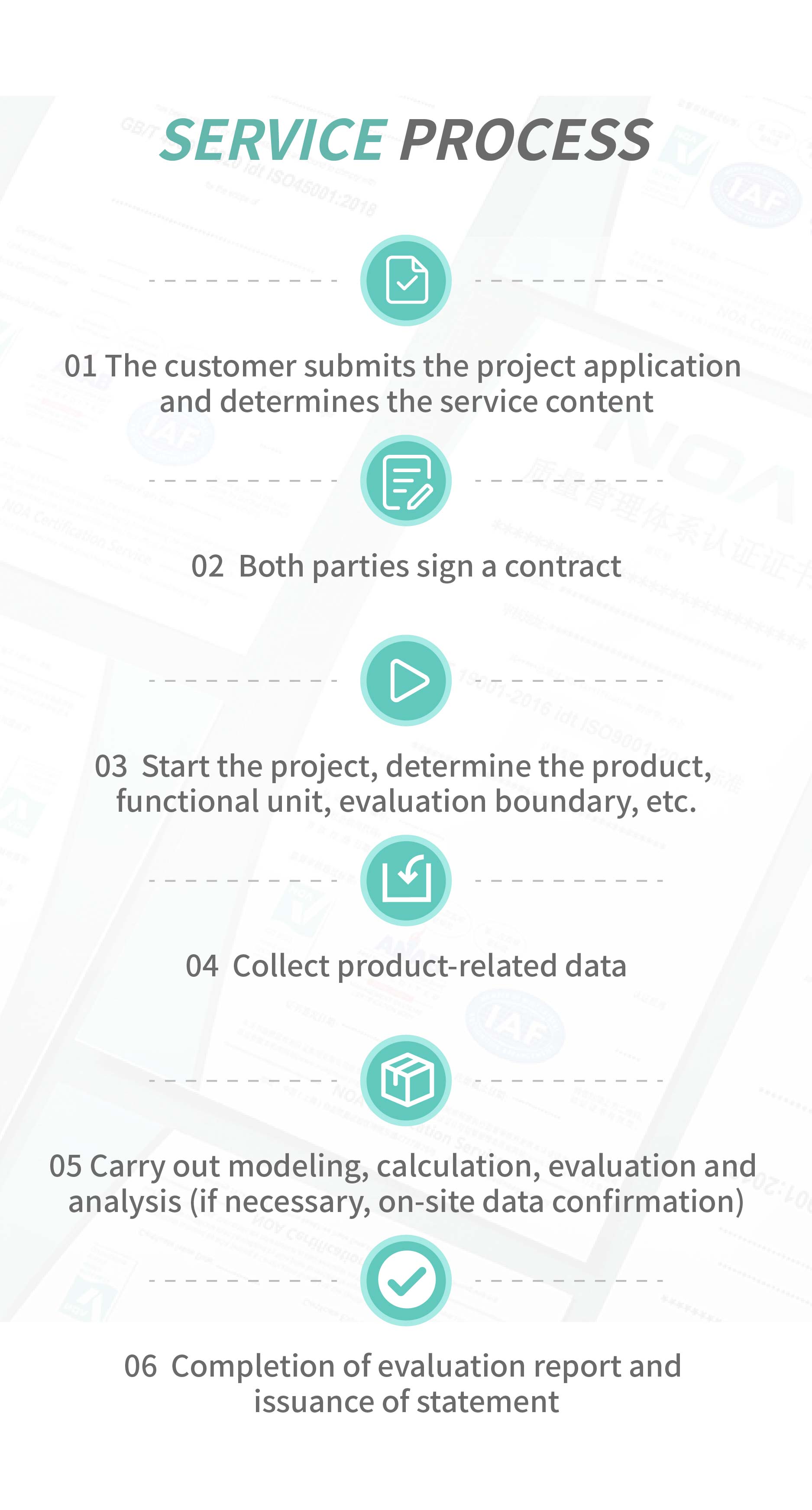
life cycle assessment (LCA) refers to the compilation and evaluation of inputs and outputs and their potential environmental impacts during the life cycle of a product system. LCA considers the entire life cycle of the product, from the acquisition of raw materials, the production of energy and materials, the manufacture and use of the product, to the treatment of the product at the end of its life, and the final disposal. Through this systematic view, potential environmental load shifts can be identified and possibly avoided at all stages or links throughout the life cycle.
The study of LCA includes:
1. Determining the purpose and scope of the analysis;
2. life cycle inventory analysis, LCI;
3. life cycle impact assessment;
4. There are four stages of life cycle interpretation.

According to relevant standards, GHG emissions from feedstock to production, distribution, use and disposal/reuse are expressed as CO2e. The process of measuring the carbon footprint of various products throughout their life cycle can help companies gather the information they need to: reduce various GHG emissions, identify cost-saving opportunities, integrate emission impacts into decisions about supply, materials, product design, manufacturing, etc., demonstrate leadership in environmental responsibility or corporate responsibility, meet customer needs for product carbon footprint information, etc.
○ ISO14040 Principles and Framework for Life Cycle Assessment/GB/T 24040 Principles and Framework for Life Cycle Assessment in Environmental Management
○ ISO14044 Requirements and Guidelines for Life Cycle Assessment/GB/T 24044 Requirements and Guidelines for Life Cycle Assessment in Environmental Management











Tel:+86-400 821 5138
Fax:+86-21 3327 5843
Email:noa@noagroup.com